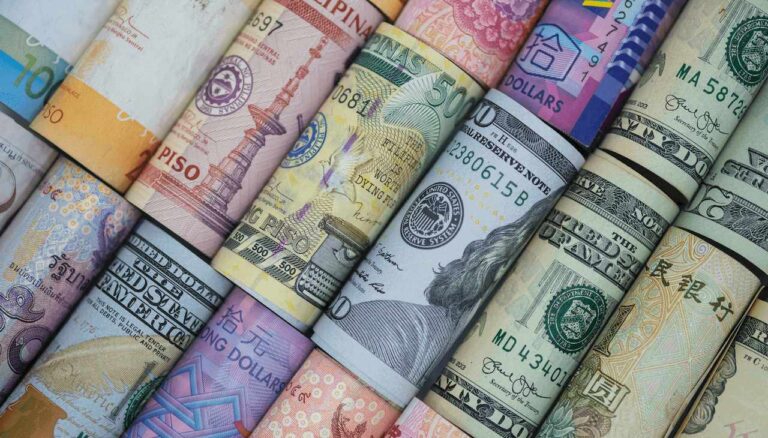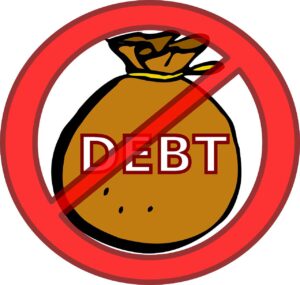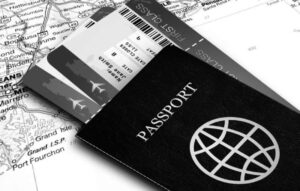Top 10 strongest currencies in the world (2024)

Currency is a crucial aspect of international trade and finance, and the strength of a currency can greatly impact a country’s economy. In this article, we will explore the top 10 strongest currencies in the world. These currencies are widely accepted and play an important role in international transactions and investments.
The list includes some of the world’s most well-known currencies, such as the US dollar, euro, and pound sterling, as well as some lesser-known but equally strong currencies such as the Chinese yuan, Japanese yen, and Canadian dollar. By understanding the features and strengths of these currencies, we can gain a deeper appreciation for the role of currency in the global financial system and make more informed investment decisions.
World’s strongest currencies
1. U.S. Dollar (USD)
The U.S. dollar is the world’s most widely used currency and is the official currency of the United States. It is widely accepted as a form of payment in many countries, and is also the dominant currency in the international monetary system.
The U.S. dollar is often used as a benchmark for other currencies and is widely used in international trade, as well as being a key reserve currency held by central banks around the world. The U.S. dollar is also a major currency for foreign exchange transactions and is used as the base currency for many financial products, such as futures and options contracts.
2. Euro (EUR)
The euro is the official currency of the European Union and is used by 19 of its member states. It is the second most traded currency in the world and is widely accepted as a form of payment in many countries outside of Europe. The euro is a major currency for international trade and is also used as a key reserve currency by many central banks.
The creation of the euro was intended to promote economic integration among the European Union countries and to increase the international competitiveness of the European economy. The euro is also used as a benchmark for other currencies, and is widely used in foreign exchange transactions and financial products such as bonds and derivatives.
3. Pound Sterling (GBP)
The pound sterling is the official currency of the United Kingdom and is widely used in British overseas territories. It is the fourth most traded currency in the world and is widely accepted as a form of payment in many countries. The pound sterling is one of the oldest currencies in the world and has a long history as a key international currency.
Despite the UK’s recent decision to leave the European Union, the pound sterling remains an important currency in international trade and finance and is widely used in foreign exchange transactions and financial products such as bonds and derivatives. The pound sterling is also a key reserve currency held by many central banks around the world.
4. Chinese Yuan (CNY)
The Chinese yuan is the official currency of the People’s Republic of China and is widely used in mainland China and Hong Kong. The yuan has been growing in importance as China has emerged as a major player in the global economy, and it is now included in the International Monetary Fund’s basket of major currencies.
The yuan is becoming increasingly important in international trade, with a growing number of countries using it as a settlement currency in trade with China. The yuan is also being used increasingly in foreign exchange transactions, although it is still subject to capital controls and restrictions on international use. Despite these restrictions, the yuan is becoming an increasingly important currency for international investment, with many investors and institutions seeking to diversify their portfolios by holding yuan-denominated assets.
5. Japanese Yen (JPY)
The Japanese yen is the official currency of Japan and is widely used in the country. It is one of the most traded currencies in the world and is widely accepted as a form of payment in many countries. The yen is also a key reserve currency held by many central banks, and is often used as a safe haven currency in times of economic uncertainty and market volatility.
The yen is an important currency for international trade, and is widely used in foreign exchange transactions and financial products such as bonds and derivatives. The yen is also an important currency for investment, with many investors seeking to hold yen-denominated assets as a hedge against market volatility and currency fluctuations.
6. Canadian Dollar (CAD)
The Canadian dollar is the official currency of Canada and is widely used in the country and its territories. The Canadian economy is heavily dependent on its natural resources, particularly its energy sector, and the Canadian dollar is often referred to as a commodity currency as its value can be influenced by movements in commodity prices. The Canadian dollar is widely accepted as a form of payment in many countries, and is the sixth most traded currency in the world.
The Canadian dollar is also an important currency for investment, with many investors seeking to hold Canadian assets as a hedge against market volatility and currency fluctuations. The Canadian dollar is widely used in foreign exchange transactions and financial products such as bonds and derivatives, and is also a key reserve currency held by many central banks.
7. Australian Dollar (AUD)
The Australian dollar is the official currency of Australia and is widely used in the country and its territories. The Australian economy is heavily dependent on its natural resources, particularly its mining and agriculture sectors, and the Australian dollar is often referred to as a commodity currency as its value can be influenced by movements in commodity prices.
The Australian dollar is widely accepted as a form of payment in many countries and is the seventh most traded currency in the world. The Australian dollar is also an important currency for investment, with many investors seeking to hold Australian assets as a hedge against market volatility and currency fluctuations. The Australian dollar is widely used in foreign exchange transactions and financial products such as bonds and derivatives, and is also a key reserve currency held by many central banks.
8. Hong Kong Dollar (HKD)
The Hong Kong dollar is the official currency of Hong Kong, a special administrative region of China. The Hong Kong dollar is widely used in Hong Kong and is widely accepted as a form of payment in many countries.
Hong Kong is a major international financial center and the Hong Kong dollar is an important currency for investment, with many investors seeking to hold Hong Kong assets as a hedge against market volatility and currency fluctuations. The Hong Kong dollar is widely used in foreign exchange transactions and financial products such as bonds and derivatives, and is also a key reserve currency held by many central banks.
9. Singapore Dollar (SGD)
The Singapore dollar is the official currency of Singapore and is widely used in the country and its territories. Singapore is a major international financial center and the Singapore dollar is an important currency for investment, with many investors seeking to hold Singapore assets as a hedge against market volatility and currency fluctuations.
The Singapore dollar is widely used in foreign exchange transactions and financial products such as bonds and derivatives, and is also a key reserve currency held by many central banks. The Singapore dollar is widely accepted as a form of payment in many countries, and is the ninth most traded currency in the world.
10. Swedish Krona (SEK)
The Swedish krona is the official currency of Sweden and is widely used in the country and its territories. Sweden is a developed economy and the Swedish krona is an important currency for investment, with many investors seeking to hold Swedish assets as a hedge against market volatility and currency fluctuations.
The Swedish krona is widely used in foreign exchange transactions and financial products such as bonds and derivatives, and is also a key reserve currency held by many central banks. The Swedish krona is widely accepted as a form of payment in many countries, and is the tenth most traded currency in the world.
Conclusion
These currencies are widely used in foreign exchange transactions and financial products such as bonds and derivatives, and are also key reserve currencies held by many central banks. They play a role in international trade and finance, and are subject to fluctuations in value based on economic conditions and geopolitical events. Investors and traders should closely monitor these currencies to stay informed and make informed investment decisions.
Don't miss a thing. Follow us on Telegram and Follow us on WhatsApp. If you love videos then also Subscribe to our YouTube Channel. We are on Twitter as MakeMoneyDotNG.





